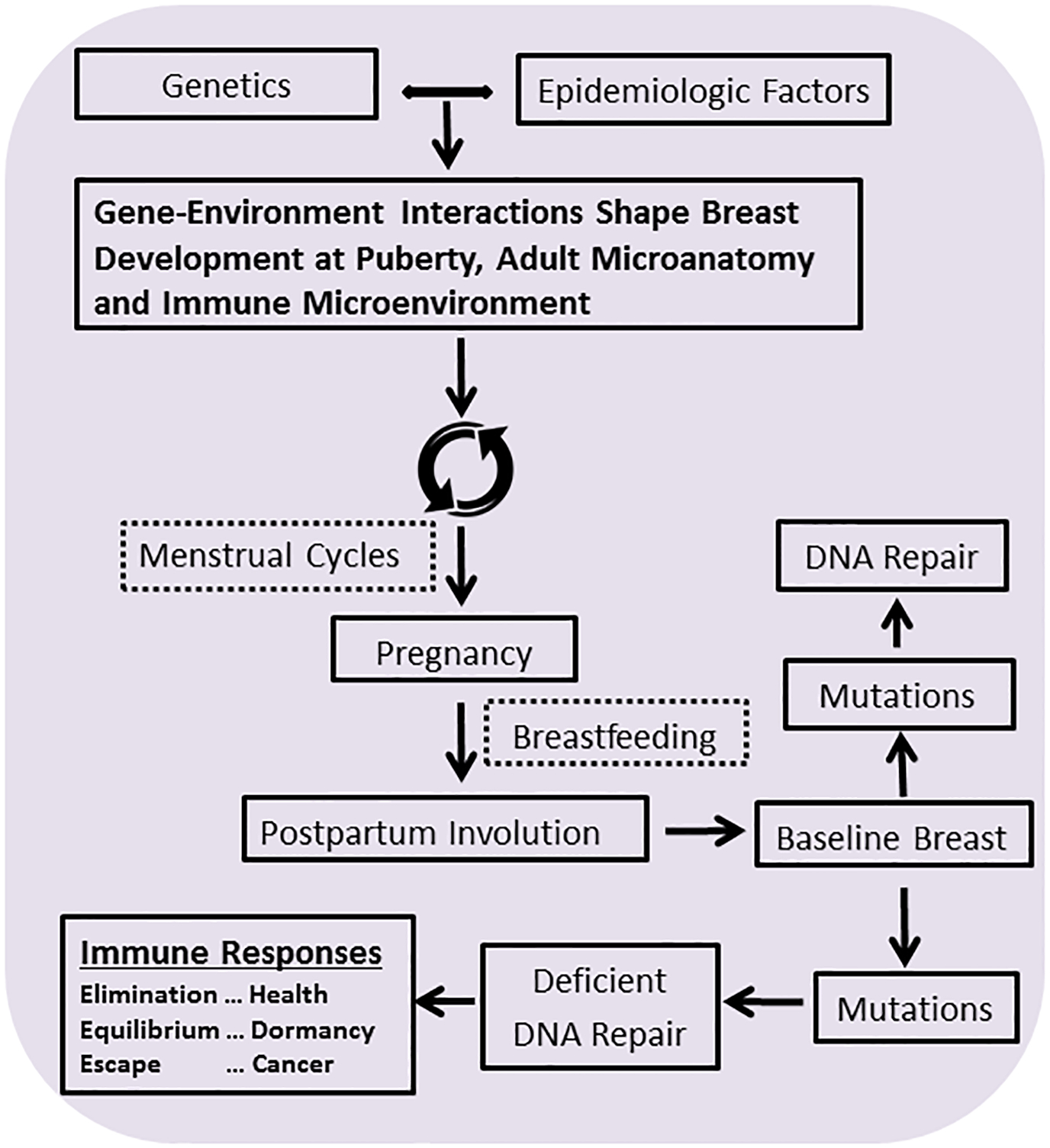Figure 2.

Gene environment interactions influence the microanatomy of the pre-pubescent and pubertal breast, both with regard to lobular architecture and the immune microenvironment. After puberty, menstrual cycles and other breast cancer risk factors alter this baseline state; however, the most dramatic changes occur with pregnancy and then postpartum involution, two factors that dramatically impact breast anatomy and cancer risk. Breastfeeding impacts the immune component of the breast, protecting the breast from infection, contributing to the developing immune system of the infant, and influencing breast cancer risk. Postpartum involution restores the baseline state of the beast after weaning and may contribute importantly to breast cancer risk or health.
